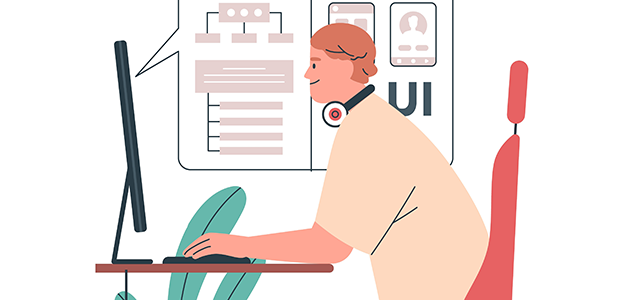
Ed-tech isn’t all bad
Almost a third of university courses still combine face-to-face teaching with online learning, data gathered by the BBC suggests.
However, as one disgruntled student labels virtual education no more than a “glorified online streaming service”, how can educators deliver quality, virtually? Here, Ross Slogrove, UK and Ireland country manager at business phone system provider Ringover, explains how VoIP technology can help overcome these challenges.
In January 2023, the BBC reported that 28% of university courses are still being taught the hybrid way, compared to just 4.1% pre-pandemic. For some students, blending the physical with the virtual has been beneficial, offering greater flexibility and reducing time on campus. Others, however, report a drop in the quality of their education. For educators, succeeding in 2023 has become a balancing act – offering the flexibility of hybrid education, without risking a subpar educational experience.
Introducing VoIP
For hybrid education to work effectively, educators and their students need access to the right technology. Voice over Internet Protocol, or VoIP, can allow educational facilities to merge their telephone and computer networks in a way that’s more secure, cost-effective and easy-to-use.
VoIP enables calls through the internet, rather than a fixed telephone line. By 2025, it’s going to become absolute essential that all educational facilities replace traditional legacy services with internet-based calling. BT will switch off the public switched telephone network (PSTN) in just two years’ time and, giving the complexity of transferring multiple teaching departments, back offices and administrative bureaus, it’s best to act now rather than wait for the deadline.
The sooner the education sector acts, the sooner it can reap the benefits of VoIP. Having a VoIP telephone system in place, integrated into a customer relationship management (CRM) system, forms the backbone of any ed-tech stack. Not only will it help educators deliver better quality online teaching, VoIP can also be used for multiple other facets of education customer service, from prospecting to future students and helpdesk support, to executing marking campaigns and streamlining email management.
Securing the space
A huge benefit of VoIP, that also helps deliver a better education customer service, is its security credentials. All educational facilities keep large volumes of data on record, including student contact details, performance logs, medical information, and attendance records.
Keeping this data safe from security breaches is crucial, but old analogue phone systems are more vulnerable to hacking. In fact, it’s reported that just over 40% of primary schools and 70% of secondary schools experienced cyber breaches between 2021 and 2022.
One of the main cyber threats facilities can face is through a Voice over Misconfigured Internet Telephones (VoMIT) tool, where cybercriminals steal voice snippets and confidential information directly from calls. However, a cloud-based VoIP system encrypts calls to protect content, rendering it unreadable if it is hacked.
Bringing confidence back
One of the biggest barriers teachers face when delivering high-quality virtual lessons is the lack of confidence. And, three years on from the pandemic, a lack of digital skills still impacts the education sector.
The 21st Century Teachers report, published in July 2022, found that 20% of teachers say they have little or no experience using digital technology for teaching, and 48% feel increased work stress due to the lack of digital technology integrated into their teaching. Elsewhere, a YouGov poll of 536 staff revealed that only 21% of teachers felt ‘very confident’ with online learning.
So how can VoIP make teachers feel more at ease with online learning? Firstly, a VoIP system like Ringover’s encompasses a range of communication tools such as in-app chat, video calling and SMS messaging, which are easily connected with existing CRM integrations, APIs and educational tools.
This unification of communication tools and technology provides educators with some relief knowing that a VoIP phone system works alongside their existing teaching technologies and doesn’t require any further technical skill or experience to manage.
With the reception of hybrid learning still unbalanced, it is essential educational facilities keep customer service in mind for every one of their deliverables. Going hybrid has presented some obstacles, but VoIP can change that. The ease at which VoIP can integrate with existing systems and improve teacher and student experience takes the challenge out of delivering at a distance.

